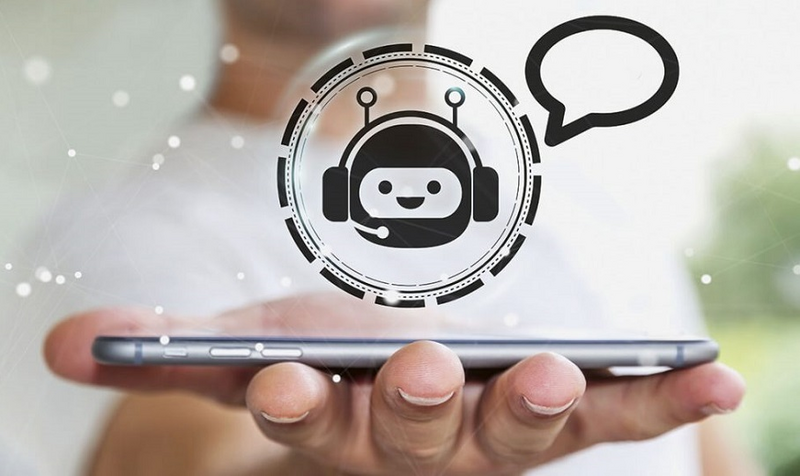ATD Blog
3 Lessons L&D Professionals Can Learn From Customer Service Chatbots
Thu Aug 12 2021

Bookmark
Automation benefits for companies are nothing new; for decades, companies have used interactive voice response systems (IVRs), which have eased the burden and cost of call centers while simultaneously frustrating customers. But, web-based chatbots offer another level of benefit for organizations and an improved experience for customers. Customers can interact with chatbots on demand, and media-rich features like buttons and images make the user experience more robust than the limited functionality of a robocall.
That being said, chatbots still have a long way to go to deliver true frictionless customer service. All too often, customers who are motivated enough to get help usually have a very specific problem that a generic menu cannot support (for example, “You shipped my order to the wrong address!”). Furthermore, natural language processing is still nowhere near consumers’ expectations. They’ve been spoiled by the emotionally intelligent AI beings seen in the movies, such as C-3PO from Star Wars or J.A.R.V.I.S. from Iron Man. It’s all too easy to break even the most prevalent voice-activated digital assistants like Alexa and Google Assistant or Siri, all of which have seen billions of dollars put into their development.
Despite not matching the idealized bots on screen, instant, on-demand smart bots for customers can and should work just as effectively to support learners in the workplace. Most enterprises’ answers are buried under antiquated software platforms and a hodgepodge of systems with clumsy navigation. Add in training courses that still cater to old-school classroom learning, and it’s not surprising that learning programs continue to have huge gaps in training reinforcement and effective performance support.
This next generation of employees is entering the workforce with the expectation that there should be easily accessible solutions to problems and questions. These workers grew up with Google and social media, where answers come instantly even if the credibility of those answers is subject to scrutiny. Self-directed learning in the workplace is indeed growing in popularity due to this tech-savvy worker demographic, but this popularity is also due to an explosion of available curriculum and a work-from-home sensibility that many employees value greatly.
This self-directed learning movement creates new challenges for Learning and Development (L&D) professionals both in program and curriculum design and in developing a technology infrastructure to support that design. No longer is a straightforward Learning Management System (LMS) deemed good enough as L&D executives are now seeking to implement more extensive Learning Experience Platforms (LXPs). Self-directed learning also creates a challenge for measuring learning activity, let alone learning efficacy.
Because L&D staffing is traditionally underfunded, figuring out how to provide learner support has many executives looking at the world of customer service chatbots for a potential solution. As they should, chatbots have proven to be very effective in delivering instant answers and guidance to customers, all at a reasonable cost and implementation timeline.
But, using a chatbot to support learners in a complex organization has the same “gotchas” as a customer service chatbot. If not implemented well, a chatbot may frustrate learners with less-than-satisfying user experiences. To avoid this, organizations can consider the following best practices:
1. Set very clear user expectations. Don’t get caught in the trap of launching a chatbot as a foolproof technology and overpromise/under-deliver on the user experience. Users will inherently be wary of automation, having likely been disappointed many times in the past. State very clearly what the chatbot can do, what content library it has access to, and even what it cannot do. Also, include in the chatbot design an intuitive way to help the user when the chatbot cannot understand the user’s query. One of the fundamental problems with natural language processing is that it assumes that users are asking the right questions. But too often, chatbots get tripped up by misspellings, unclear queries, and typos. Rather than leaving a user stranded by these trip ups, provide a clear path for users to try again or to get help from a human.
2. Invest in linking up internal systems. A crucial aspect of creating a chatbot for learner support is integrating the full breadth of curriculum and job aids stored across multiple internal systems. In fact, the ability to do this may be the single biggest value the chatbot delivers to learners. This integration includes finding an adaptive chatbot platform with the ability to manage content (see Mobile Coach as a good example) and having the IT team facilitate API connections between the chatbot and the various data sources (like an LMS and intranets).
3. Iterate and improve. Another key to building chatbots for learners is to take advantage of a chatbot’s iterative properties. Reporting can highlight quantitative measures like what buttons people click the most, what questions are asked most often, and when users bail on the user experience. It can also gather qualitative measures by having the chatbot ask users itself (for example, “Hey there, how am I doing? Tell me how I’ve been helpful or how I can be better”). With these measures and the fact that a chatbot’s user interface is simply messaging, a chatbot can then be easily A/B tested and have its script iterated on to refine and optimize the user experience. (Again, this requires an easy-to-use chatbot authoring platform.)
By developing and deploying chatbots to help learners, L&D organizations can both deliver effective workplace learning and alleviate struggles with being understaffed and overworked. Not only can these chatbots cater to immediate issues once learners have learned to trust them, but they can also proactively encourage learners throughout their learning journeys.
More from ATD
